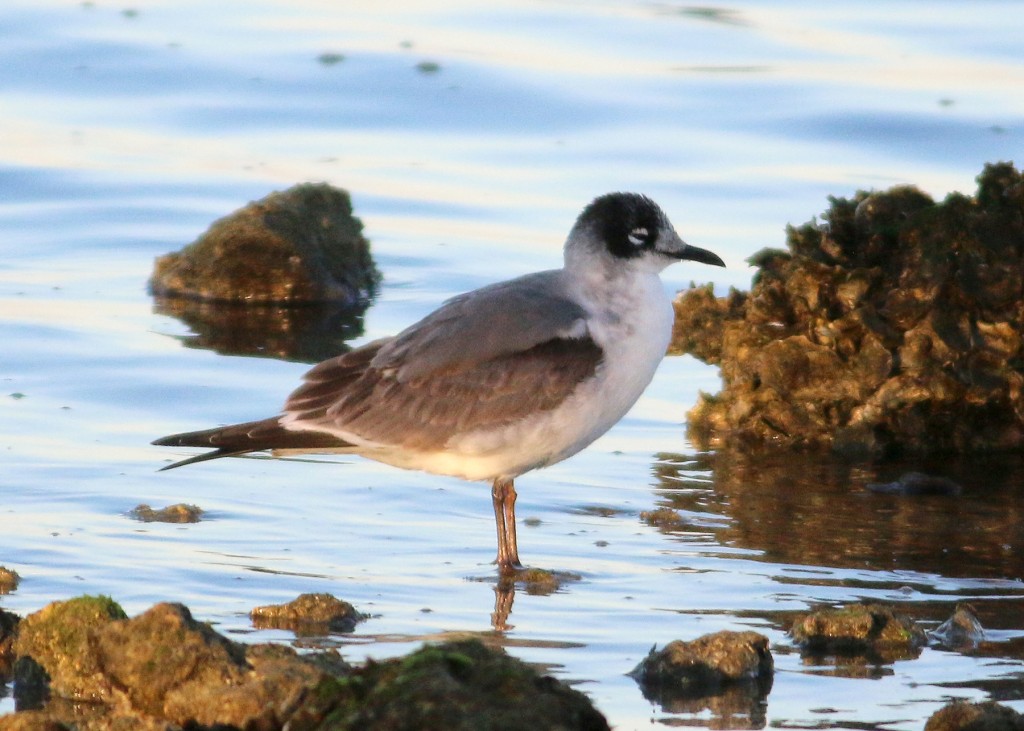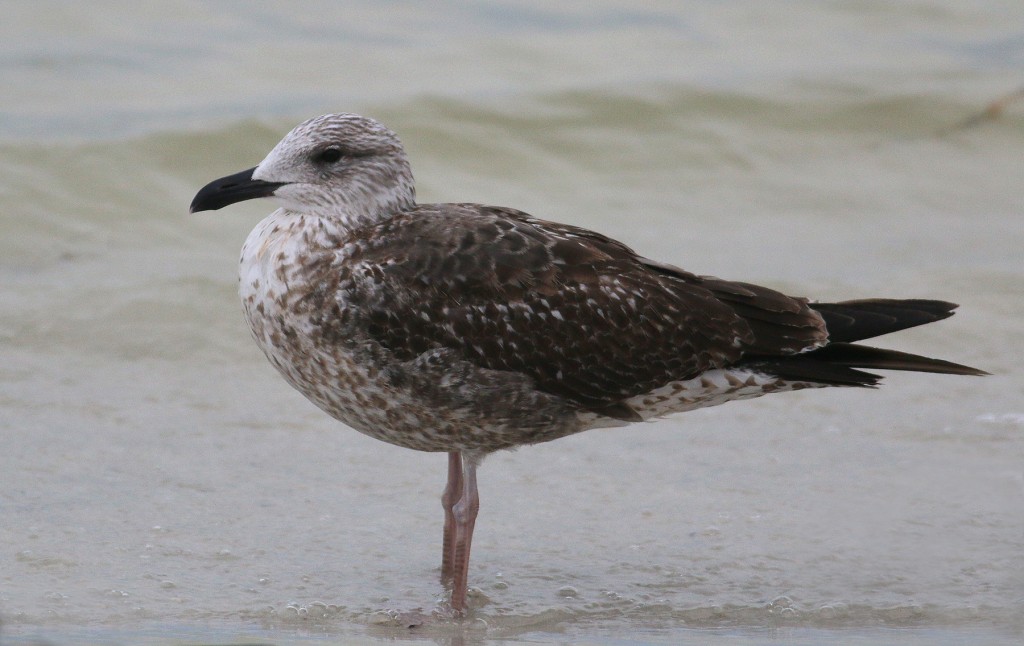Gulls typically are not the favorites of most birders; they certainly don’t seem to have the same widespread allure that owls or raptors or warblers have. If you meet anybody who truly enjoys sorting through gull flocks, then you know you are in the presence of a hard-core birder. So why is it that gulls often achieve least-favored status? For most birders, I suppose that it revolves around three issues. First, gulls present identification challenges, as they can take two or three years to achieve maturity, with different plumage patterns for each year. Second, finding the more interesting or desirable gulls has a bit of a needle-in-a-haystack feel, requiring sorting through a large flock to find something different. Third, at least where I live, the more interesting or desirable gulls arrive in winter and I’m not a fan of sorting through large distant flocks through a scope while shivering. Especially at places like landfills (=garbage dumps) where gulls tend to accumulate. Logically, I realize that the first two reasons are not very justifiable, as identification challenges and finding rarities are two aspects of advanced birding that make it such an enjoyable hobby, but hey, I’m not alone in these biases. During these past few weeks, however, I’ve found that studying gulls in Florida is quite enjoyable because cold weather is not an issue, and the gulls allow close approach on lovely beaches where even binocs often are not needed.
So today I thought that I’d share two of the interesting gulls that I’ve found over the past few days. A Franklin’s Gull has been making appearances at a local town beach located only five miles or so from where we are staying. As I’ve only seen Franklin’s Gulls once before, in Colorado, I thought that an early morning stop was worthwhile. When we arrived at the beach I was disappointed, since only two dozen or so gulls were present, and I expected much more. What were the odds that a Franklin’s would be in such a small flock? Well it turns out that we beat the odds, and here’s where the expertise of others came in handy. Franklin’s Gulls are difficult to distinguish from the much-more-common Laughing Gulls, with Franklin’s having a narrower bill and a more prominent white eye-ring. In the absence of knowing that a Franklin’s was appearing sporadically at this beach, I probably would have assumed that all of the darker-winged gulls were Laughing, and missed this rarity. (there’s a lesson embedded in here for us all!) But after sorting through the small flock carefully, a narrow-billed gull became apparent, especially in comparison with the accompanying Laughing Gulls. The dim early morning light allowed a diagnostic photo. To give an idea of its abundance, only two other Franklin’s Gulls have been reported on the east coast in eBird this year to date. My thanks go out to the fine birders who originally identified and reported this bird.

A Franklin’s Gull in winter plumage in early morning light. The narrower bill and more prominent white eye-ring are key identification points for distinguishing it from the similar Laughing Gull.
Two days later I was scanning through the gulls and terns at our local beach that I have been trying to visit daily. Every day the combination of shorebird, gull, and tern species present here is slightly different, and I have been hoping for a Sandwich Tern to make an appearance. After a quick scan and finding the usual suspects, I noticed an immature gull that was intermediate in size between the accompanying Laughing Gulls and Herring Gulls. There aren’t too many possibilities within that size range, and after consultation with my well-worn Sibley’s Guide, it became apparent that I was watching a first year Lesser Black-backed Gull. Although its not nearly as rare as Franklin’s Gull, this bird also was flagged as rare at this location in eBird. Maybe gulling can be fun after all. At least when the weather is this warm and the birds are this accommodating.
